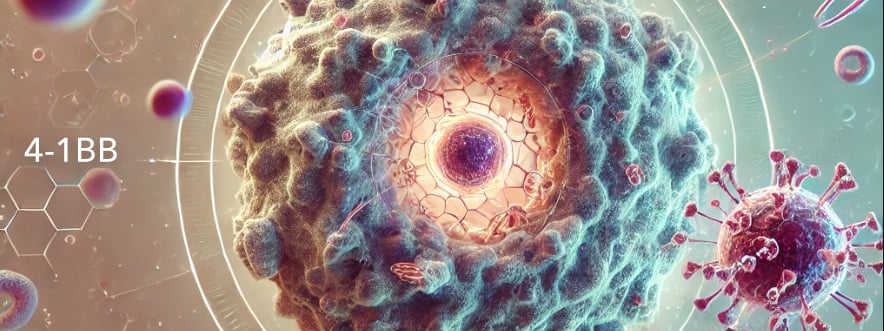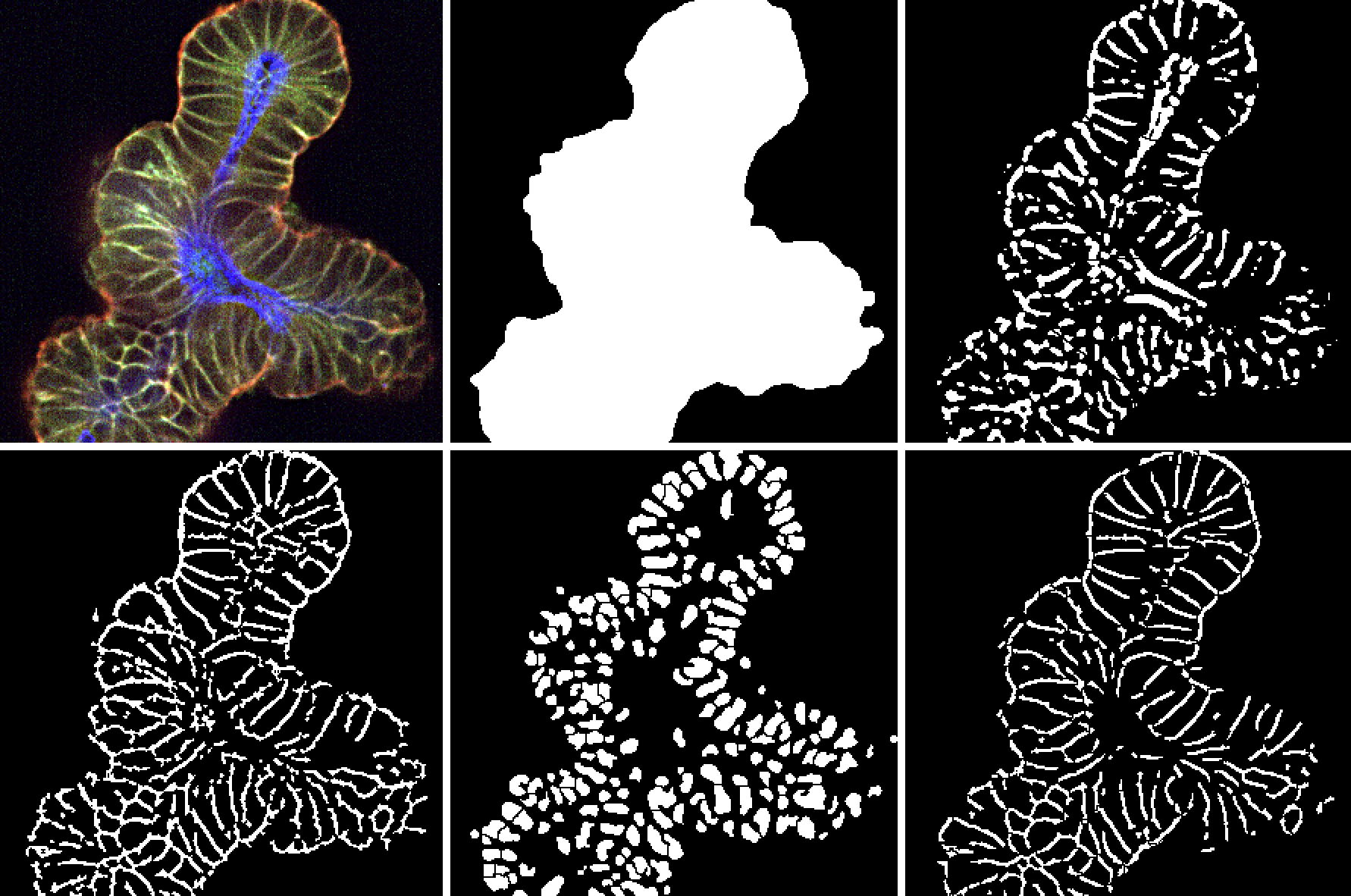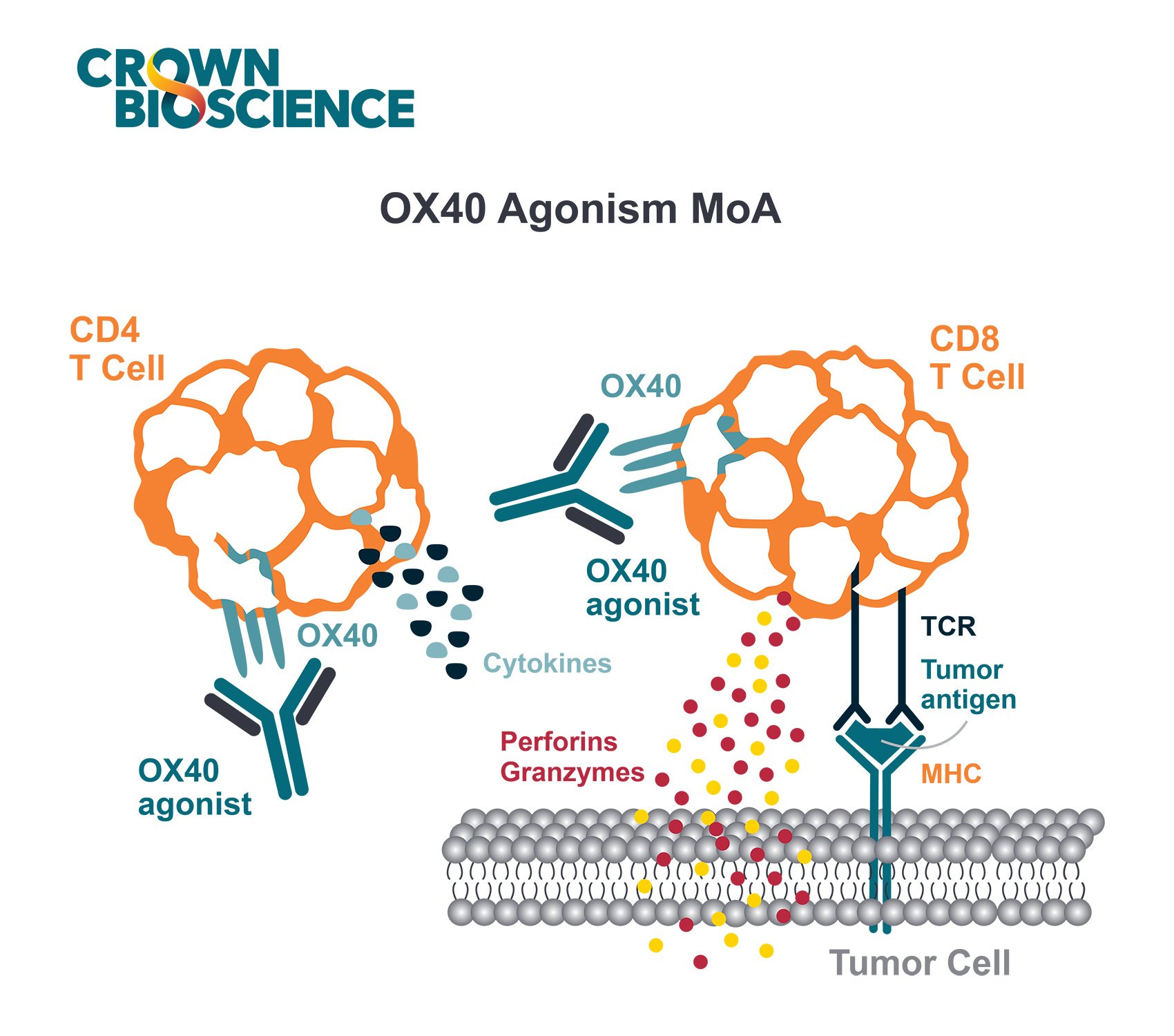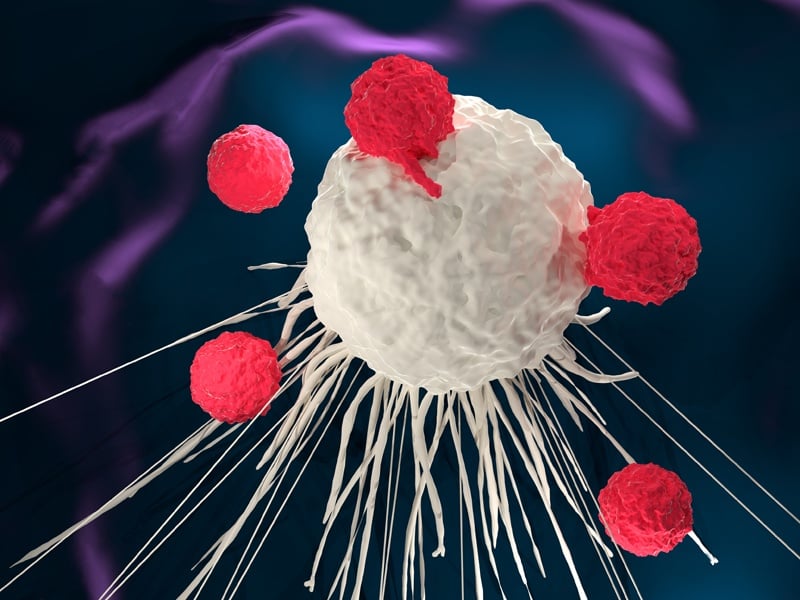Following on from OX40, our TNF superfamily posts continue with 4-1BB, another important target in T cell co-stimulation.
4-1BB Overview and How it Stimulates the Immune System
For productive activation of a T cell, the cell must recognize its target through engagement of antigen and the cognate T cell receptor. Additionally, the T cell must also receive co-stimulatory signal(s) in parallel. These signals are generated through the interactions of co-stimulatory ligands and receptors, such as 4-1BB (CD137) and its ligand, CD137L.
4-1BB, which belongs to the tumor necrosis factor receptor super family (TNFSFR9), was originally identified as a molecule induced on the surface of activated mouse and human CD4+ and CD8+ T cells, with its expression undetectable on non-activated T cells. Ligation of the receptor induces T cell activation, proliferation, survival, and cytokine production as well as inhibiting apoptosis, leading to an effective immune response. In addition, 4-1BB is also found on other immune cells such as NK and dendritic cells.
Furthermore, by selecting T cells from the blood based on their 4-1BB expression, an enrichment of antigen-specific and reactive effector T cells was reported. While on the other hand, data also demonstrated that depletion of specifically 4-1BB+ T cell populations can effectively control alloreactive T cells in the context of GVHD.
These observations, taken together, support that cells expressing 4-1BB are potent effector cells; those desired for immune control of cancer or those unwanted in autoimmune disease. In the case of the former, 4-1BB is a logical target for IO applications. In contrast to the mode of action of checkpoint inhibitors, which is to block the inhibitory signals that cancer cells use to evade the immune system, agents that target the co-stimulatory machinery are designed to stimulate the immune system against the cancer cells.
Clinical Trials Targeting 4-1BB
The discussion above supports the use of agonistic antibodies targeting 4-1BB as immunotherapy against cancer. Therefore, clinical trials that target 4-1BB in cancer patients were initiated after the development of the first two agonistic antibodies urelumab and utomilumab. While both antibodies demonstrated promising effects in preclinical models, the following clinical trials were somewhat disappointing.
A significant number of cases showed urelumab being responsible for adverse events, including liver toxicity and fatigue, while utomilumab had no evidence of dose limiting toxicities. Besides these adverse effects, the efficacy of the monotherapy also demonstrated limited effects. Consequently, after the development of urelumab and utomilumab a new generation of 4-1BB agnostic antibodies was generated. These antibodies differ in the epitope recognition or have a distinct 4-1BB blocking mechanisms and are currently in various phases of their development. Examples of these second-line antibodies are; AGEN2373, Hot-1030, ADG106, ATOR-1017, PE0116, CTX-471, LVGN6051 and STA551.
In addition to testing these agonistic antibodies as monotherapies, it has been of interest to combine them with other therapeutics such as the check point inhibitors, anti-PD-1/L1 and CTLA-4. While these combinational treatments demonstrated promising effects in preclinical testing, they need to be further evaluated in clinical trials.
To further improve the efficacy and safety of 4-1BB co-stimulation, novel approaches have been developed with the generation of bi- or tri-specific antibodies. For example, different combinations of 4-1BB with PD-L1, CD40, B7-H3, FAP, HER2, EGFR and CD19 (such as GEN1046, NM21-1480, GEN1042, MCLA-145) were generated and overall showed promising effects in preclinical studies or phase I trials. However, further evaluation is needed.
Further 4-1BB Uses Including CAR-T Therapy
Further advancements were made with chimeric antigen receptor (CAR) T cells, where the intracellular domain of 4-1BB was incorporated in the cellular therapy. This approach demonstrated the support of memory function and long-term antitumor effects of cellular therapy, some of which have been already FDA approved. Additionally, when the 4-1BB and CD28 domain are combined advantages of both domains can be integrated into the therapy.
Conclusion
In summary, the role of 4-1BB as a co-stimulatory molecule which supports T cell activation makes it an interesting candidate for cancer immunotherapy. However, clinical trials of 4-1BB firsts agonistic antibodies such as urelumab and utomilumab revealed both potential and limitations. The subsequent developments of second-generation antibodies and novel combinations in bi- or tri-specific format are therefore currently ongoing of which first preclinical results demonstrated great promise. Advances also include the use of 4-1BB in CAR-T cell therapies, which have been shown to improve memory and long-term anti-tumor responses. Ongoing research and trials continue to refine these approaches to further optimize the efficacy and safety of 4-1BB-targeted therapies to enhance cancer treatment outcomes.







